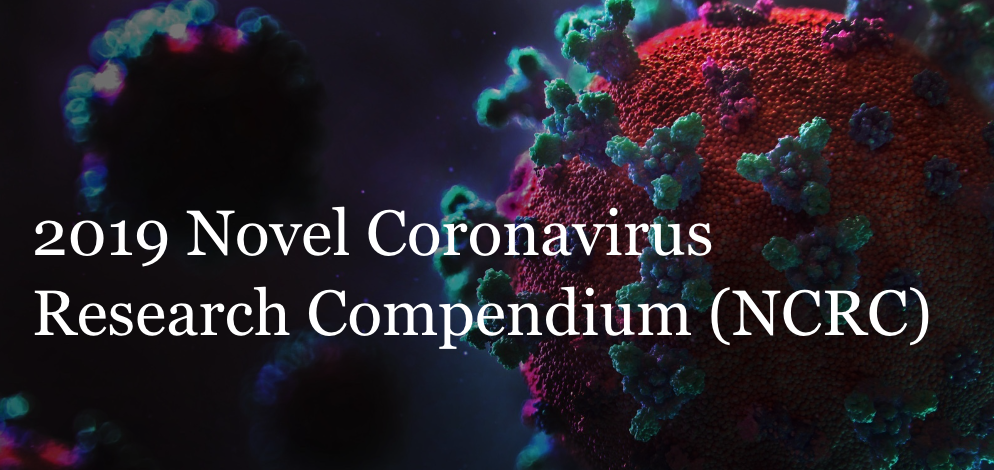Evidence for increased breakthrough rates of SARS-CoV-2 variants of concern in BNT162b2-mRNA-vaccinated individuals
This article has been Reviewed by the following groups
Discuss this preprint
Start a discussion What are Sciety discussions?Listed in
- Multiple reviews (Godwyns26)
- Evaluated articles (ScreenIT)
- Evaluated articles (NCRC)
- Evaluated articles (Rapid Reviews Infectious Diseases)
- Articles that showcase interesting usage of Sciety (BlueReZZ)
- Multiple group peer review and curation (scietyHQ)
Abstract
The BNT162b2 mRNA vaccine is highly effective against SARS-CoV-2. However, apprehension exists that variants of concern (VOCs) may evade vaccine protection, due to evidence of reduced neutralization of the VOCs B.1.1.7 and B.1.351 by vaccine sera in laboratory assays. We performed a matched cohort study to examine the distribution of VOCs in infections of BNT162b2 mRNA vaccinees from Clalit Health Services (Israel) using viral genomic sequencing, and hypothesized that if vaccine effectiveness against a VOC is reduced, its proportion among breakthrough cases would be higher than in unvaccinated controls. Analyzing 813 viral genome sequences from nasopharyngeal swabs, we showed that vaccinees who tested positive at least 7 days after the second dose were disproportionally infected with B.1.351, compared with controls. Those who tested positive between 2 weeks after the first dose and 6 days after the second dose were disproportionally infected by B.1.1.7. These findings suggest reduced vaccine effectiveness against both VOCs within particular time windows. Our results emphasize the importance of rigorously tracking viral variants, and of increasing vaccination to prevent the spread of VOCs.
Article activity feed
-
-

Our take
In a matched pair case-control study, available as a preprint and thus not yet peer-reviewed, comparing breakthrough cases in 247 partially and 149 fully immunized adults with BNT162b2 vaccine to unvaccinated controls in Israel, the odds of COVID-19 infection by the B.1.1.7 variant versus the wild-type were twice as high among partially immunized adults compared to unvaccinated controls but there was no difference between fully vaccinated cases and unvaccinated controls. All 8 B.1.351 variant infections in the fully immunized group were detected prior to the 14-day threshold for optimal immune protection by BNT162b2 vaccination. Observed associations are not measures of vaccine effectiveness, as study inclusion was restricted to individuals with confirmed COVID-19 infections.
Study design
case-control
Our take
In a matched pair case-control study, available as a preprint and thus not yet peer-reviewed, comparing breakthrough cases in 247 partially and 149 fully immunized adults with BNT162b2 vaccine to unvaccinated controls in Israel, the odds of COVID-19 infection by the B.1.1.7 variant versus the wild-type were twice as high among partially immunized adults compared to unvaccinated controls but there was no difference between fully vaccinated cases and unvaccinated controls. All 8 B.1.351 variant infections in the fully immunized group were detected prior to the 14-day threshold for optimal immune protection by BNT162b2 vaccination. Observed associations are not measures of vaccine effectiveness, as study inclusion was restricted to individuals with confirmed COVID-19 infections.
Study design
case-control
Study population and setting
Between January 3 and March 7, 2021, individuals with COVID-19 infections, confirmed by RT-PCR and sequenced (for B.1.1.7, B.1.351, or wildtype lineages), were identified in Israel and assigned to one of three study groups: 1) infections detected from two weeks after the first dose to seven days after the 2nd dose of receiving BNT162b2 mRNA SARS-CoV-2 vaccine (“partial effectiveness” cases), 2) infections detected seven days or more following the 2nd BNT162b2 vaccine (“full effectiveness” cases), and 3) infections with no vaccination history (“unvaccinated controls”). Controls were matched to partial and full effectiveness cases, respectively, based on age (+/- 10 years), sex, district of residence, religion, and date of PCR sampling. A conditional logistic regression model was used to determine whether partially or fully vaccinated cases had higher odds of infection with a SARS-CoV-2 variant of concern relative to unvaccinated controls.
Summary of main findings
Of 3,491 infections detected among partially or fully vaccinated cases in the 4.7 million patients investigated, only 433 (12.4%) were able to be matched with a control and sequenced. Among the partial effectiveness cases (n = 247), 92% of COVID-19 infections were detected within 28 days of the 1st vaccine dose; among the full effectiveness cases (n = 149), one-third (31%) were detected 21+ days after the 2nd vaccine dose. The B.1.1.7 variant was responsible for ~90% of COVID-19 infections in vaccinated cases and unvaccinated controls; only 11 infections of the B.1.351 variant were detected in case-control pairs. No significant difference in B.1.1.7 infections was observed when comparing full effectiveness cases to unvaccinated controls, but for partial effectiveness cases the odds of B.1.1.7 infection was twice as high. The odds of B.1.351 infection was significantly higher among the full effectiveness cases relative to unvaccinated controls, but there was no increased odds in the partial effectiveness group. Importantly, all eight matched B.1.351 cases identified among the full effectiveness cases were detected within 7-13 days of the 2nd vaccine dose and none were detected after that.
Study strengths
Investigators matched vaccinated individuals to unvaccinated individuals to control for factors (i.e., age, date of PCR test, district of residence) that could bias observed associations between the lineage of SARS-CoV-2 infections and immunization status.
Limitations
Because this study compares the distributions of strains between vaccinated and unvaccinated individuals, not rates of infection, effect estimates obtained from this study should not be interpreted as measures of vaccine effectiveness; this study cannot directly assess the vaccine effectiveness for any strain but can only assess the relative vaccine effectiveness of one strain versus another (i.e., an odds ratio of 2.0 could equate to vaccine efficacy of 90% relative to 95%). The low number of total B.1.351 and wildtype infections in both the full effectiveness analysis (n=9 and 14, respectively) and partial effectiveness analysis (n=2 and 64, respectively) may have underpowered analyses. SARS-CoV-2 vaccinations in Israel were offered first to older adults, which resulted in age-imbalanced vaccinated case group and unvaccinated control group; SARS-CoV-2 breakthrough cases in the full effectiveness group, therefore, could be partially attributed to older age, which could be associated with an attenuated immune response to vaccination.
Value added
This is among the first studies to assess the relative propensity for breakthrough infections between SARS-CoV-2 lineages among BNT162b2 vaccine recipients in a non-controlled, observational setting.
-

Shivakumar Narayanan, Shyam Kottilil, Joel V. Chua
Review 3: "Evidence for increased breakthrough rates of SARS-CoV-2 variants of concern in BNT162b2 mRNA vaccinated individuals"
This preprint investigates SARS-CoV-2 variant breakthrough rates and finds VOCs more prevalent in COVID19+ vaccinees relative to the unvaccinated. Reviewers deem claims compelling, but warn findings do not concern disease severity and larger follow-up studies are needed.
-

Konstantin Chumakov
Review 2: "Evidence for increased breakthrough rates of SARS-CoV-2 variants of concern in BNT162b2 mRNA vaccinated individuals"
This preprint investigates SARS-CoV-2 variant breakthrough rates and finds VOCs more prevalent in COVID19+ vaccinees relative to the unvaccinated. Reviewers deem claims compelling, but warn findings do not concern disease severity and larger follow-up studies are needed.
-

Art Reingold
Review 1: "Evidence for increased breakthrough rates of SARS-CoV-2 variants of concern in BNT162b2 mRNA vaccinated individuals"
This preprint investigates SARS-CoV-2 variant breakthrough rates and finds VOCs more prevalent in COVID19+ vaccinees relative to the unvaccinated. Reviewers deem claims compelling, but warn findings do not concern disease severity and larger follow-up studies are needed.
-

Strength of evidence
Reviewers: Art Reingold (UC Berkeley) | 📗📗📗📗◻️
Konstantin Chumakov (U.S. Food and Drug Administration) | 📒📒📒◻️◻️
Shivakumar Narayanan, Shyam Kottilil, Joel V. Chua (University of Maryland School of Medicine) | 📒📒📒◻️◻️ -

SciScore for 10.1101/2021.04.06.21254882: (What is this?)
Please note, not all rigor criteria are appropriate for all manuscripts.
Table 1: Rigor
Institutional Review Board Statement IRB: Ethics statement: The study was approved by the CHS institutional review board (IRB #0016-21-COM2) and was exempt from the requirement for informed consent. Randomization not detected. Blinding not detected. Power Analysis not detected. Sex as a biological variable not detected. Table 2: Resources
No key resources detected.
Results from OddPub: We did not detect open data. We also did not detect open code. Researchers are encouraged to share open data when possible (see Nature blog).
Results from LimitationRecognizer: We detected the following sentences addressing limitations in the study:Additionally, sequencing limitations prevented us from sequencing very low …
SciScore for 10.1101/2021.04.06.21254882: (What is this?)
Please note, not all rigor criteria are appropriate for all manuscripts.
Table 1: Rigor
Institutional Review Board Statement IRB: Ethics statement: The study was approved by the CHS institutional review board (IRB #0016-21-COM2) and was exempt from the requirement for informed consent. Randomization not detected. Blinding not detected. Power Analysis not detected. Sex as a biological variable not detected. Table 2: Resources
No key resources detected.
Results from OddPub: We did not detect open data. We also did not detect open code. Researchers are encouraged to share open data when possible (see Nature blog).
Results from LimitationRecognizer: We detected the following sentences addressing limitations in the study:Additionally, sequencing limitations prevented us from sequencing very low viral load samples (Methods), and thus the focus of our study was on vaccinees who generated higher viral loads. However, it has been shown that cases with low viral load may be a lesser concern from a public health perspective, as they are associated with less symptoms and decreased transmission [16]. Finally, our FE cohort is based on infections documented seven or more days post the second vaccine dose (Table 1). Some subjects in this cohort may have been infected before the immunity from the boost was fully established, and it is thus possible that enhanced immunity from the boost, which develops over time [17], may more effectively prevent infection with the B.1.351 variant. Further research is required to test whether and how these potential limitations affect the results. The main caveat of our study was the small sample size of both the WT and B.1.351 variants. These small samples sizes are a product of (a) the dramatic increase in frequency of the B.1.1.7 variant (first detected in Israel in mid-December 2020) (Fig. 1A), and (b) the low frequency of the B.1.351 variant in Israel [14]. In fact, in our latest samples obtained in late February and early March 2021, we noted fixation of the B.1.1.7 variant, but this interpretation requires caution as our sample size was low (Fig. 1A). Furthermore, caution is required from over-interpreting the odds ratios obtained, as the absolute numbers we found...
Results from TrialIdentifier: No clinical trial numbers were referenced.
Results from Barzooka: We did not find any issues relating to the usage of bar graphs.
Results from JetFighter: We did not find any issues relating to colormaps.
Results from rtransparent:- Thank you for including a conflict of interest statement. Authors are encouraged to include this statement when submitting to a journal.
- Thank you for including a funding statement. Authors are encouraged to include this statement when submitting to a journal.
- No protocol registration statement was detected.
-



